Everything you need to know about solar eclipse glasses, including where to get them
If you're planning to gaze upon the upcoming Great American Eclipse in April through run-of-the-mill sunglasses, you're doing it wrong.
In the face of the sun's powerful rays, regular specs made of cheap plastic and polycarbonate material just aren't going to cut it. That's why astronomers and other experts emphasize that skygazers intent on viewing the upcoming total solar eclipse do so with specialized eyewear crafted to protect their sensitive retinas from permanent damage.
Fortunately, solar eclipse glasses are readily available from plenty of vendors across the internet. Just make sure you get certified spectacles before the eclipse cuts a long path April 8 across North America, shrouding much of the U.S. in darkness.
Here's what to know about solar eclipse glasses and where you can get a pair of your own, as well as other eclipse-viewing methods.
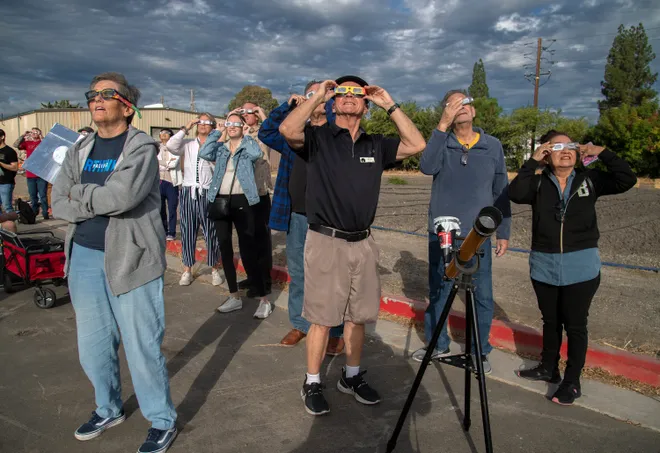
Interactive maps:How long will the solar eclipse darkness last in your city?
Why do you need glasses for a solar eclipse?
The sun's powerful rays can burn the eyes and damage the retinas of those who don't wear proper eye protection or take other safety precautions to view solar eclipses.
Even viewing any part of the bright sun through camera lenses, binoculars and telescopes without a specialized solar filter could instantly cause severe eye injury, according to the American Astronomical Society.
Unlike other solar eclipses, a total eclipse offers spectators a chance to gaze upon the spectacular sight with the naked eye after the orbiting moon completely blocks out the sun's light, leaving only the outermost layer visible.
But until that moment, spectators will need proper eyewear just like they would for any other eclipse.
NASA advises skygazers to plan accordingly and ensure they have the safe, and simple, equipment needed for solar viewing.
You'll know it's safe to fully take in the dazzling display when the moon – which is close enough in its orbit of Earth to appear as large as the sun – blocks the sun's face and the sky turns to night time. That's when "totality" occurs, whereby observers can see the outermost layer of the sun's atmosphere known as the corona.
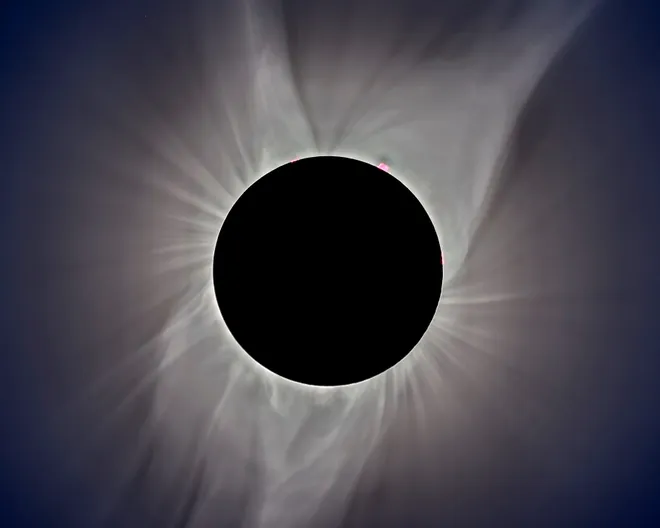
Where to find solar eclipse glasses
So how are solar eclipse glasses different from that pair of Ray-Bans you have?
Well, they let in entirely too much light than is safe for our eyes when looking directly at the sun. Certified eyewear, on the other hand, is held to an international safety standard and is 100,000 times darker to block nearly all visible, infrared and ultraviolet light.
Often made with a polyester film coated in aluminum, the glasses are highly specialized but also ridiculously common and easy to find – if you know where to look. As the eclipse approaches, many places like local libraries, astronomical observatories, schools and other public agencies will provide proper eyewear, often for free.
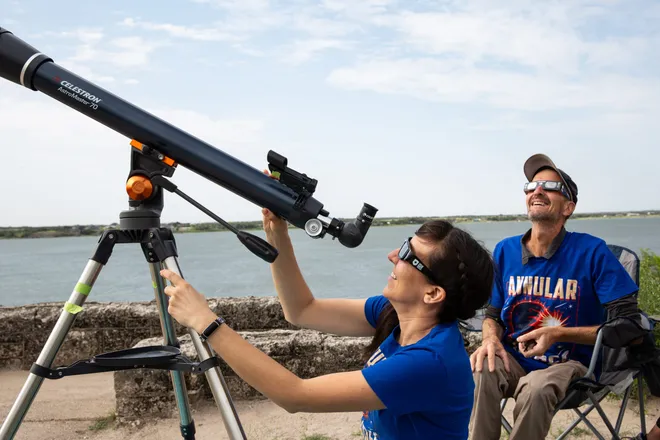
But we live in the age of the internet economy, and many people may be looking to simply order a pair online for a hassle-free delivery. Luckily, you're in luck there, too.
Many eclipse websites like GreatAmericanEclipse.com and NationalEclipse.com sell a variety of eyewear products, along with plenty of other gadgets one may need to see the eclipse.
Of course, Amazon and plenty of other online retailers are also selling solar eclipse glasses in bulk, meaning you'll have plenty to share with your friends and family. American Paper Optics, the nation's largest supplier of eclipse glasses, even offers express shipping across the country.
Purchases you make through our links may earn us and our publishing partners a commission.
Solar eclipse glasses must be from an approved vendor
There's one caveat to all this as you do your eclipse glasses shopping: There are plenty of fakes and imitators out there, so make sure you're buying a proper certified pair.
Don't worry: it's easier to verify your purchase than you may think. For your convenience, the American Astronomical Society maintains a curated list of approved vendors. In preparation for the upcoming eclipse primarily concentrated in North America, the organization has updated its list to give priority to North American manufacturers.
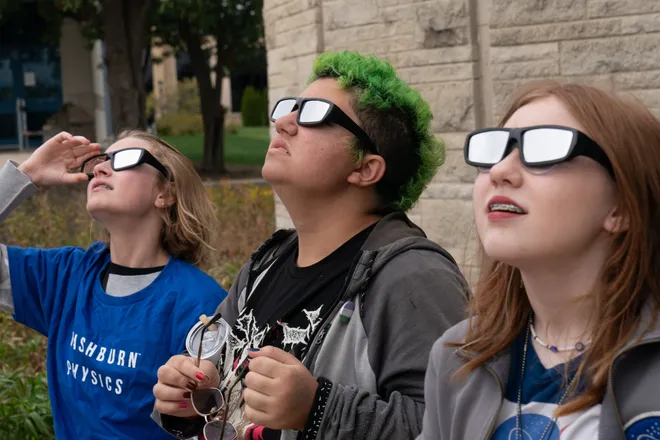
The organization, which ensures eclipse glasses are in compliance with the International Organization for Standardization, says most approved vendors use solar filters manufactured by AstroSolar and Thousand Oaks Optical, according to Space.com. Regardless, your best bet is to look for a product that is labeled with "ISO," a surefire sign that the independent organization vouches for the product's safety and quality.
To be ISO-approved, solar eclipse glasses have to meet a host of requirements, the most important of which arguably pertains to how much of the sun's light is able to transmit through the filters.
When shopping Amazon or other retailers, look elsewhere if a seller's name is not one of the verified suppliers on the American Astronomical Society's list.
Make your own solar eclipse viewers
Another simple method is to create your own pinhole projector to project the sun onto a nearby surface. The American Astronomical Society offers helpful instructions to set them up.
Making one doesn't even require any special equipment – just some common household items.
With the sun at your back, make sure its light passes through a small opening – a hole punch in an index card, a pasta colander, or even your own outstretched fingers – onto the ground or another surface. The little spaces will project a grid of small images on the ground that, during the partial phases of a solar eclipse, will reveal the sun's crescent shape.
Then of course, when it suddenly gets dark, it will be safe to look directly at the eclipsed sun.
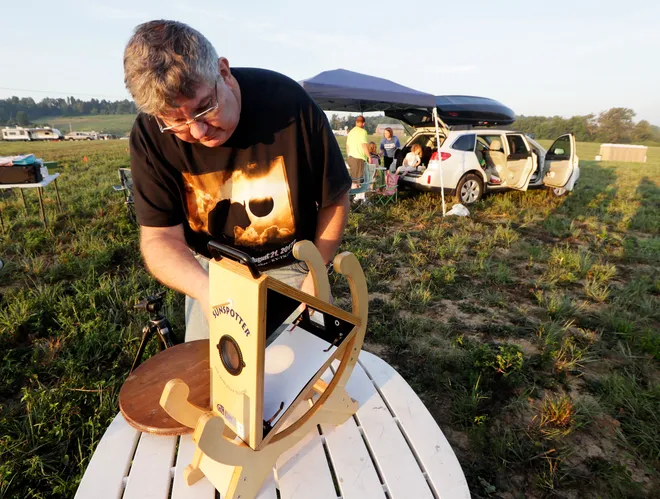
The lenses and mirrors of telescopes and binoculars can also be used to optically project a magnified image of the sun onto a piece of paper.
This method provides bigger and brighter images when compared to pinhole projection but can be dangerous both to the devices and those using them. As such, it is only recommended for experienced astronomical observers, according to the American Astronomical Society.
Other methods include handmade sun funnels, as well as the pricey Sunspotters and Solarscopes, which are better-suited for groups like astronomy clubs, schools, museums and planetariums.
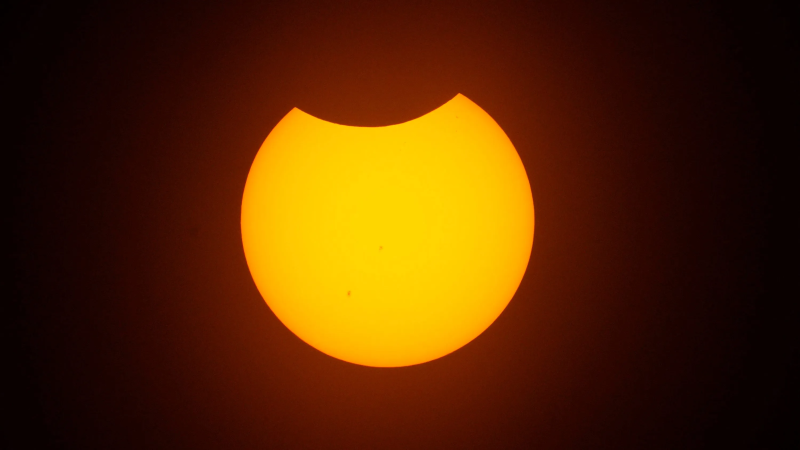
Eric Lagatta covers breaking and trending news for USA TODAY. Reach him at elagatta@gannett.com
Disclaimer: The copyright of this article belongs to the original author. Reposting this article is solely for the purpose of information dissemination and does not constitute any investment advice. If there is any infringement, please contact us immediately. We will make corrections or deletions as necessary. Thank you.






